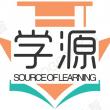
会计英语(第二版)
全新正版 极速发货
¥ 34.3 7.1折 ¥ 48 全新
库存25件
浙江嘉兴
认证卖家担保交易快速发货售后保障
作者编者:谭茜玮|责编:毕芸芸|总主编:张欣
出版社立信会计
ISBN9787542974228
出版时间2023-08
装帧平装
开本其他
定价48元
货号31835425
上书时间2024-11-11
- 最新上架
商品详情
- 品相描述:全新
- 商品描述
-
目录
第一章 会计导论
Learning objectives
1.Nature of accounting and business(会计和企业的本质)
2.Types and forms of business entities(商业实体的类型和形式)
2.1 Types of business entities(商业实体的类型)
2.2 Forms of business entities(商业实体的形式)
3.Why keep accounts(为什么要记账)
4.Financial accounting and management accounting(财务会计和管理会计)
4.1 Financial accounting(财务会计)
4.2 Management accounting(管理会计)
5.Users of accounting information(会计信息的使用者)
6.The regulatory framework(监管框架)
6.1 The regulatory system(监管制度)
6.2 The International Accounting Standards Board (IASB)(国际会计准则理事会)
6.3 International Financial Reporting Standards (IFRSs)(国际财务报告准则)
6.4 Generally Accepted Accounting Principles (GAAP)(一般公认会计原则)
7.Accounting assumptions(会计假设)
7.1 Going concern(持续经营)
7.2 Accruals basis(权责发生制)
8.The qualitative characteristics of financial information(财务信息的质量特征)
8.1 Fundamental qualitative characteristics(基本质量特征)
8.2 Enhancing qualitative characteristics(强化质量特征)
8.3 Other accounting concepts(其他会计概念)
Key terms
Notes to the text
Self-test questions
Exercises
第二章 会计等式和复式记账
Learning objectives
1.What is accounting elements(什么是会计要素)
1.1 Assets(资产)
1.2 Liabilities(负债)
1.3 Owner's equity(所有者权益)
1.4 Income(收入)
1.5 Expenses(费用)
2.What is accounting equation(什么是会计等式)
2.1 Transactions and events(交易与事件)
2.2 Source documents(原始凭证)
3.Double entry system(复式记账)
3.1 Dual effect(duality concept)(复式记账的意义)
3.2 Debits and credits(借方和贷方)
3.3 The basic rules of double entry bookkeeping(复式记账法的基本规则)
3.4 Application of the double entry rule (复式记账法的应用步聚)
4.The use of double entry bookkeeping(复式记账法的实际运用)
4.1 Use of asset, liability, and owner's equity accounts(资产、负债和所有者权益账户的运用)
4.2 Use of revenue and expense accounts(收入和费用账户的运用)
Key terms
Notes to the text
Self-test questions
Exercises
内容摘要
本书分别从会计导论、会计等式和复试记账、
会计循环、资产、负债、权益、财务报表几个角度阐述国际会计准则的基础内容。本书每个章节都由六部分组成:学习目标(learningobjectives)、正文、重点词汇(keyterms)、难点注释(notestothetext)、课堂自测题(self-testquestions)和课后习题(exercises)。其中,“重点词汇”方便学生进行课前自学;“难点注释”便于学生深入理解章节重点;“课堂自测题”可以让学生及时检测学习成果、强化重点知识;“课后习题”可以让教师借助此部分习题合理安排上课内容,讲练结合,同时也利于学生课后对本章节的知识点进行巩固。
相关推荐
— 没有更多了 —




















以下为对购买帮助不大的评价